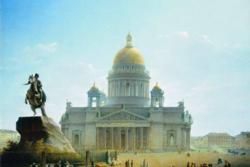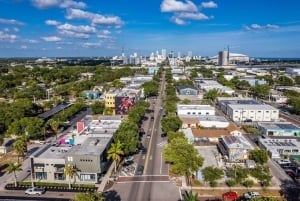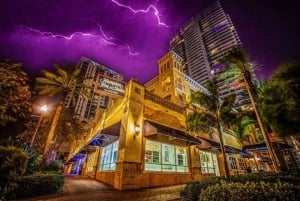What to Read
To get the most out of any trip to St Petersburg, it goes without saying that the more reading and research you do in advance of the trip, the richer your experiences will be. St Petersburg has had a short but fascinating history - many of the key individuals who have played a role in Russian history lived and worked here, and as the capital of the Russian empire the city hosted world-famous poets and writers and musicians who took inspiration from the city and featured it in their works. What follows is a subjective list of fiction and non-fiction that we’ve enjoyed and helped us better understand and appreciate this most cultured of cities. Some of the titles may be available in the English-language section of Dom knigi, on Nevsky prospekt. All can be found in our Amazon Associates store under Books, Movies and Music and many are available in electronic versions for Kindle so you can load up before you travel!
History
Two general histories of St Petersburg are available which will provide a great deal of context and detail and are well worth reading prior to any visit to the city. These are Arthur George's St Petersburg: A History, and Bruce Lincoln's Sunlight at Midnight: St Petersburg and the Rise of Modern Russia.
Romanovs
The sad lives of the last Tsar and his empress, and the tragic fate of them and their family, have fascinated authors and historians for the last century. Pulitzer Prize winner Robert K Massie has specialized in writing about Russian history. His Nicholas and Alexandra is considered the definitive western account of this tragic couple and their sad lives and is a fascinating and easy-to-read account. (History buffs will also enjoy his biographies of two other Romanovs: Peter the Great: His Life and World, and Catherine the Great: Portrait of a Woman.) For a Russian interpretation of the fate of the last Tsar and his family, turn to Edvard Radzinsky’s The Last Tsar: The Life and Death of Nicholas II. Radzinsky is a Russian historian and playwrite and focused his account on the final 18 months of the Tsar and his family, basing much of his account on contemporary reports and evidence which had remained secret under the Soviets. His biography of Alexander II, the Tsar who emancipated the serfs in 1861, is sub-titled The Last Great Tsar but presents a nuanced portrait of this conflicting figure.
Rasputin
No account of Nicholas and Alexandra is complete without an understanding of that monstrous mystic, Grigoriy Rasputin, the original Mad Monk. Radzinsky’s account, Rasputin: The Last Word is a gripping and colourful story and again based on contemporary documents which have only become available since the collapse of the Soviet Union.
Revolutions
For a contemporary account of the Russian Revolution which shook then Petrograd in 1917, the definitive western account has to be the short reportage, Ten Days That Shook the World, by American journalist, fellow traveller, and friend of Lenin John Reed. Reed is buried inside the Kremlin together with other Soviet heroes, what his account may lack in objectivity and considered analysis it more than makes up for in a thrilling narrative account. Orlando Figes places these events into a wider historical context with his A People’s Tragedy: The Russian Revolution 1891-1924. Robert Service’s biographies of Lenin, Stalin and Trotsky, as well as his general histories Comrades: Communism, a World History, The Penguin History of Modern Russia and Spies and Commissars: Bolshevik Russia and the West, which all feature St Petersburg/Petrograd/Leningrad prominently.
War
The city’s experiences during the 900 day Siege of Leningrad of 1941-1944 make for harrowing reading, but are important in understanding the psychology of the city and its inhabitants. Two recent accounts which do not flinch from presenting some of the more horrific details long suppressed by Soviet propaganda include Leningrad: State of Siege by Michael Jones and Anna Reid’s Leningrad: Tragedy of City Under Siege, 1941-1944. Reading these you can only marvel at the strength of the human spirit in adversity. For those interested in Russia’s experiences during the Great Patriotic War, a useful general introduction is provided by Richard Overy’s Russia’s War. More detailed historical accounts to read include Antony Beevor’s Stalingrad, former UK cabinet minister Alan Clark’s Barbarossa: The Russian German Conflict 1941-1945, and the Simon Sebag Montefiore modern bestsellers Stalin: The Court of the Red Tsar and Young Stalin. (Sebag Montefiore has also recently published a biography of Catherine the Great's famous lover, Potemkin, and a history of their love affair called Catherine the Great and Potemkin: The Imperial Love Affair which be all accounts is a fascinating story).
Art and culture
Russia’s art treasures also suffered greatly as a result of the German invasion. Famously, the Amber Room from the Catherine Palace at Tsarskoe Selo was removed panel by panel and shipped off to Germany. To this day it remains lost, although the room has been painstakingly restored to its original state. The Amber Room: The Fate of the World’s Greatest Lost Treasure by Catherine Scott-Clark and Adrian Levy is a somewhat breathless account of what the authors claim to be a great cover-up, but may be of interest to some visitors. A more wide-ranging work, the critically-acclaimed Rape of Europa: The Fate of Europe’s Treasures in the Third Reich and the Second World War, is a more serious work but no less readable. Orlando Figes’ cultural history of Russia, Natasha’s Dance, offers a comprehensive overview of the development of Russian art, architecture, music, literature, and decorative crafts and places them in their historical context. For a cultural history of St Petersburg itself, try Solomon Volkov's St Petersburg, A Cultural History.
Post-war
To understand something of the country during the post-war period, from Stalinism to the relative thawing of Khruschev's period before the inevitable stagnation of Brezhnev and the late Soviet period, read Anne Applebaum's magisterial Gulag, and Orlando Figes' interesting The Whisperers: Private Life in Stalin's Russia. Following these themes from a more subjective perspective, Owen Matthews' Stalin's Children: Three Generations of Love and War about his own parents' romance during the height of the Cold War, and Molotov's Magic Lantern: A Journey in Russian History provide a lot of necessary human detail often missing from purely historical accounts.
Business and economy
A serious, non-ideological account of the post-Soviet period has yet to be written – most of the books written about today’s Russia and its rulers seem to be purely commercial projects written by Cold War warriors. However Washington Post correspondent David Hoffman’s Oligarchs, and Financial Times correspondent Christia Freeland’s Sale of the Century: The Inside Story of the Second Russian Revolution are serious documentary accounts of the economic collapse and subsequent rise reinvention of the Russian economy, and provide fascinating insights into the background and rise of Russia’s wealthy oligarchs.
Russian classics and more
The founding of St Petersburg and its flourishing as the capital of an empire coincided with the emergence of Russian as a literary language and the great writers of Russian literature, many of whom lived and worked in St Petersburg. As a result, the city is well represented in many works of great literature in Russian – whether the poetry of Pushkin and Tsvetaeva, Gogol’s short stories, or the door-stop tomes of heavyweight novelists such as Tolstoy and Dostoevsky.
Aleksandr Pushkin’s Bronze Horseman is not only one of his finest narrative poems, but the eponymous statue of Peter the Great which inspired the poem is also one of the ‘must-sees’ of the city to this day. The events in the poem take place during one of the several monumental floods which affected the city every few years (prior to the construction of a barrier). Pushkin describes how Peter the Great founded the city in defiance of the natural surroundings, and introduces what was to become a common theme for Russian authors: the fate of the ‘little man’ in the face of state and national forces. This theme was further developed by Gogol and Dostoevsky in their St Petersburg-set stories. Other works at least partly concerning St Petersburg and its society include Evgeniy Onegin, a novel in verse and the story of the life and loves of an early 19th century St Petersburg dandy; and The Queen of Spades, a ghost story set in the city. Both were turned into operas with music by Petr Tchaikovsky, another former city resident. There are several good biographies of Pushkin available in English, but the best is probably Pushkin: A Biography by the Oxford academic T.J. Binyon.
Gogol may be best known in the west for his play the Government Inspector, but he wrote several fine short satirical stories featuring the city in his Petersburg Stories. These include Nevskiy Prospekt, The Overcoat and The Nose, and all feature a cold and cruel city with little to offer the average man other than misery and humiliation.
Much of Tolstoy’s two great masterpieces, War and Peace, and Anna Karenina, takes place in the palaces, salons and ballrooms of St Petersburg’s aristocrats and high society, where French was the language of polite society and Russian (spoken poorly) was used only with peasants and animals. Dostoevsky’s St Petersburg features particularly prominently in several of his novels (The Double, Crime and Punishment, The Karamazov Brothers, Notes from the Underground) but his is a very different city from the one portrayed by Tolstoy. He examines the city inhabited by the working classes, replacing Tolstoy’s glittering salons and ballrooms with grimy attic rooms, sleazy bars and a life of hard physical toil and misery.
The city is one of the main protagonists of Andrey Bely’s novel Petersburg, set in and around turn-of-the-century (19th to 20th) St Petersburg and superficially concerning the exploits of a gentleman revolutionary tasked with assassinating his own father, an important official in the Tsarist administration. Vladimir Nabokov (of Lolita fame, and also a native Petersburger) claimed it was one of the four most important novels of the 20th century and it has frequently been compared to James Joyce’s Ulysses. The novel also tips its hat to Pushkin’s Bronze Horseman when the statue comes to life and chases the main protagonist through the misty streets, exactly as happens in Pushkin’s poem.
Revolutionary Petersburg was home to a number of innovative poets who were initially swept up in the revolutionary spirit of the times and used their creative skills in support of the Soviet cause, although later becoming disillusioned. Among them were Aleksandr Blok, a St Petersburg native; Vladimir Mayakovsky, who was at Smolny to witness the October revolution, was perhaps the most famous of the early Soviet modernist poets, but later committed suicide; and Sergei Esenin, briefly married variously to the dancer Isadora Duncan and a grand-daughter of Lev Tolstoy, and who also committed suicide in a room at the Hotel Angleterre. For casual readers wanting to get some idea of the impact of these poets, Figes’ Natasha’s Dance provides perhaps the best general introduction and context.
Later 20th century poets from St Petersburg include Anna Akhmatova, whose tragic personal and professional life and work mirrored the events she lived through including revolution, war and Stalinist purges and whose house museum can be visited today. Try the biography Anna of all the Russias: The Life of a Poet Under Stalin by Elaine Feinstein. And Joseph Brodsky, a Jewish Nobel Prize Winner born in Leningrad but later expelled from the Soviet Union in 1972 having served five years in a labour colony for the anti-Soviet crime of parasitism. There are several collections of his essays, poems and conversations available in English.
A towering figure in the history of 20th century music and native Petersburger, the story of Dmitry Shostakovich’s life is also the story of the humiliations and compromises with the authorities one artist made in order to survive a brutal totalitarian regime. Among his 15 symphonies, 15 string quartets, 3 operas, six concertos and the scores for dozens of Soviet movies, it is his 7th Symphony, the Leningrad, which serves as his finest memorial. Written largely while he was living and working in Leningrad during the Siege, the symphony was broadcast around the world direct from Leningrad and came to represent the brave spirit of resistance displayed by the city’s inhabitants in the face of Nazi aggression. A number of biographies of Shostakovich have been written in English, try Solomon Volkov’s Shostakovich and Stalin for an examination of the difficult relationship between the artist and the dictator.
Contemporary fiction
St Petersburg also features in works of contemporary fiction by Russian and foreign authors alike. Fans of historical detective fiction will enjoy the stories of Boris Akunin, many of which are set in late Tsarist St Petersburg and Moscow and have been made into (Russian-language) films and translated into English. Other contemporary Russian authors whose works have been translated into English include Viktor Pelevin, Vladimir Sorokin, and Sergei Lukyanenko. South African author and Nobel Literature Prize winner J.M.Coetzee wrote an appropriately dark and complex novel based on Dostoevsky and elements of his life, The Master of Petersburg. Ghostwritten, the first novel by acclaimed British author David Mitchell, includes a rather lurid chapter about art theft set in the Hermitage. For those that like historical bodice-rippers, Kate Furnivall also has a recent St Petersburg-set book out, The Jewel of St Petersburg. Rather more serious historical fiction can be found in Eva Stanchiak's The Winter Palace, a fictional account of the rise of Catherine the Great. Ronan Bennett's Zugzwang, set in the city in 1914, is a historical thriller which has been compared to Graham Greene, Alan Furst and Brian Moore. For fiction inspired by the Siege of Leningrad and Great Patriotic War and their impact across the decades, Helen Dunmore's The Siege, Andrei Makine's The Woman Who Waited, Gillian Slovo's Ice Road and David Benioff's City of Thieves are all in different ways powerful and resonant pieces of fiction which will stay with you long after you've finished the final chapter. Finally, look out for Red Plenty by Francis Spufford, a fictional work which reads like history set in the brief period in post-war Soviet Union when it looked as though the communist dream might in fact become reality.
Travel guides
There are many traditional tour guides available to St Petersburg, often combined in a single volume with Moscow: Lonely Planet, Rough Guide, DK Eyewitness, Berlitz, Frommer’s, Fodor’s, Insight Guides, Thomas Cook, Moon's. Of course they start to date from the moment they hit the stands, but can provide useful background. More quirky is the Wallpaper City Guide. For Russian speakers, look out for the Afisha and Orange guides which can be purchased locally. For some reason the Blue Guide to Moscow and St Petersburg has not been published since the early 1990s, which is a great shame. A beautiful reminder of your trip to St Petersburg would be the coffee-table volume Petersburg Perspectives, published by Fontanka press in the UK, which presents beautiful photography together with thoughtful essays on the city by leading authors. We are also looking forward to the publication of the CityPick guide to St Petersburg, due later in 2012. But our favourite guide, small enough to fit in your pocket yet containing details not to be found anywhere else, is The Companion Guide to St Petersburg by Kyril Zinovieff and Jenny Hughes. Last published in 2003, there are not many contemporary guides whose authors are as knowledgeable and witty as Kyril Zinovieff, born to a wealthy aristocratic family in St Petersburg before the Revolution. He shares many family anecdotes and reminscences which will leave an utterly charming impression: such and such a building was where his aunts used to entertain, or this palace was where his forefathers studied engineering, and so on. The best line has to be: "My sister and I may be two of the last people still alive to have seen Rasputin". Truly unique!








